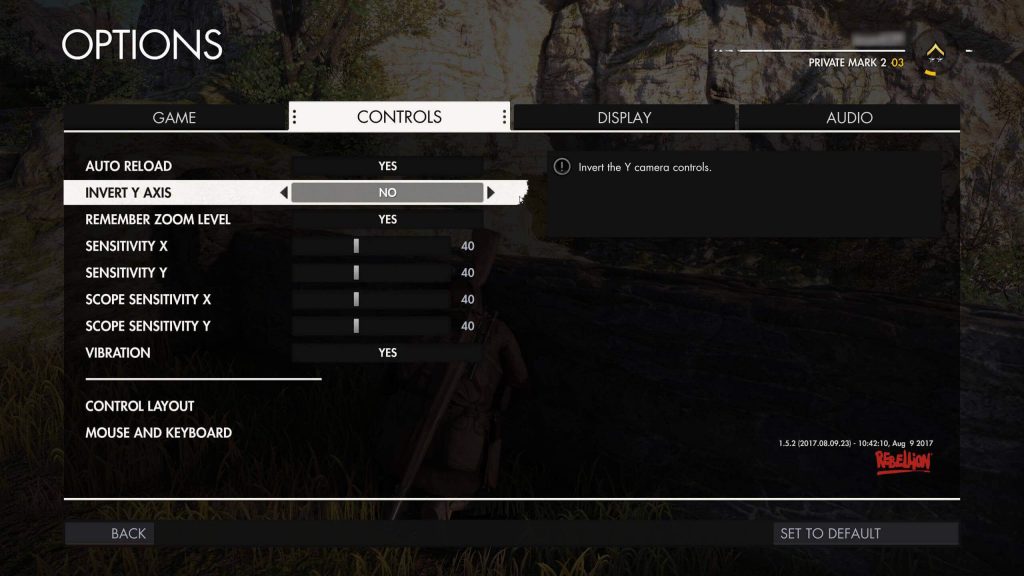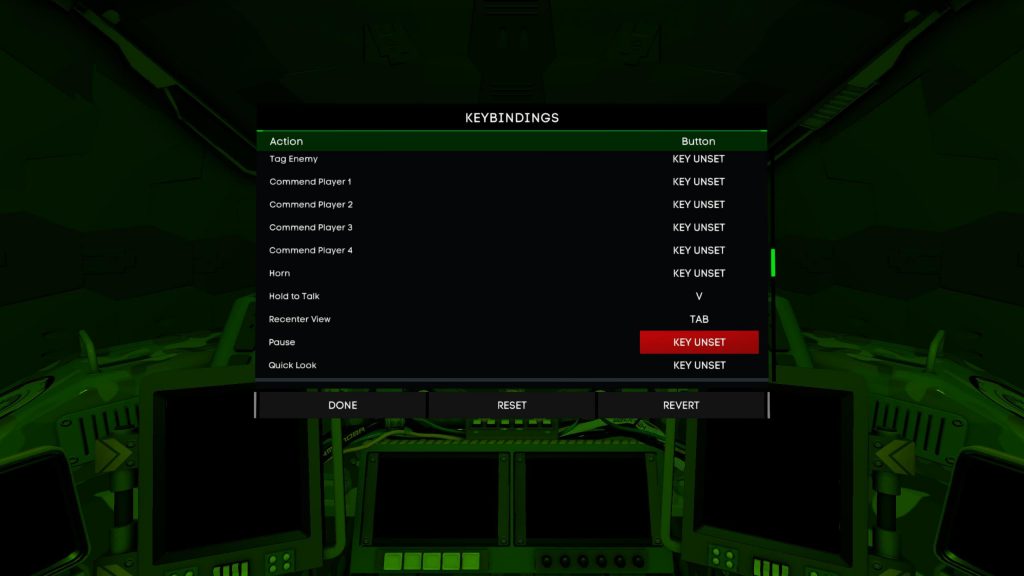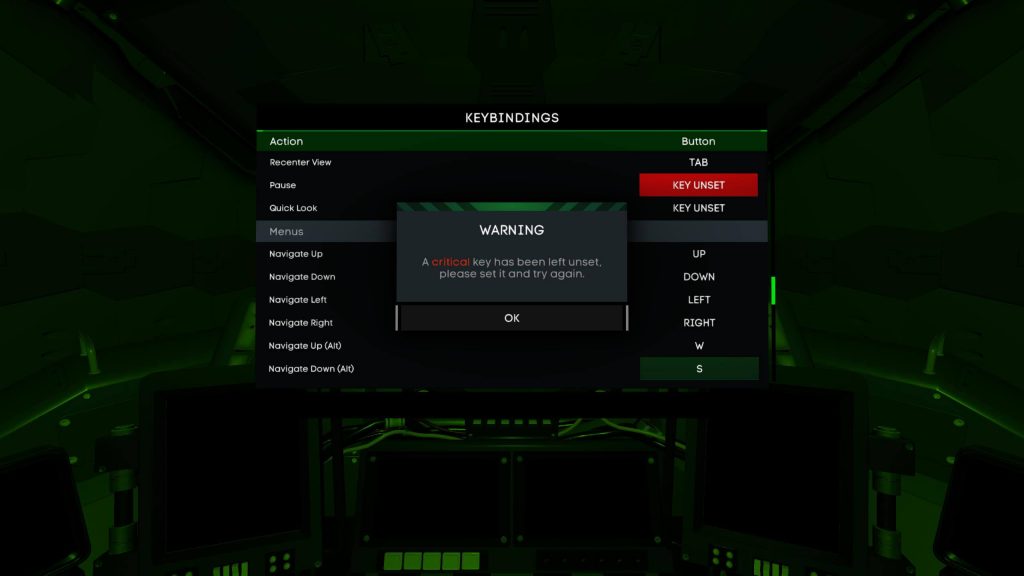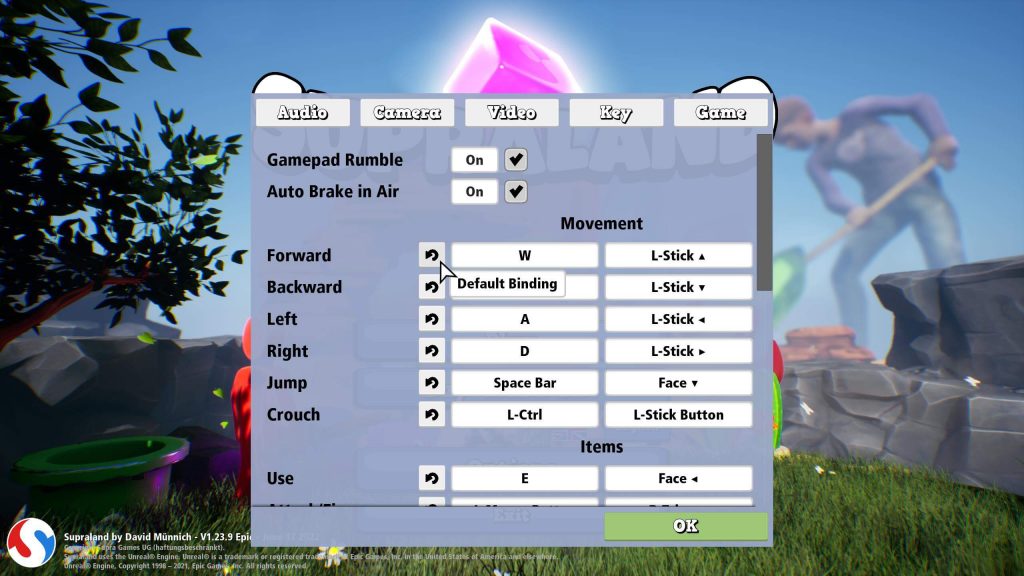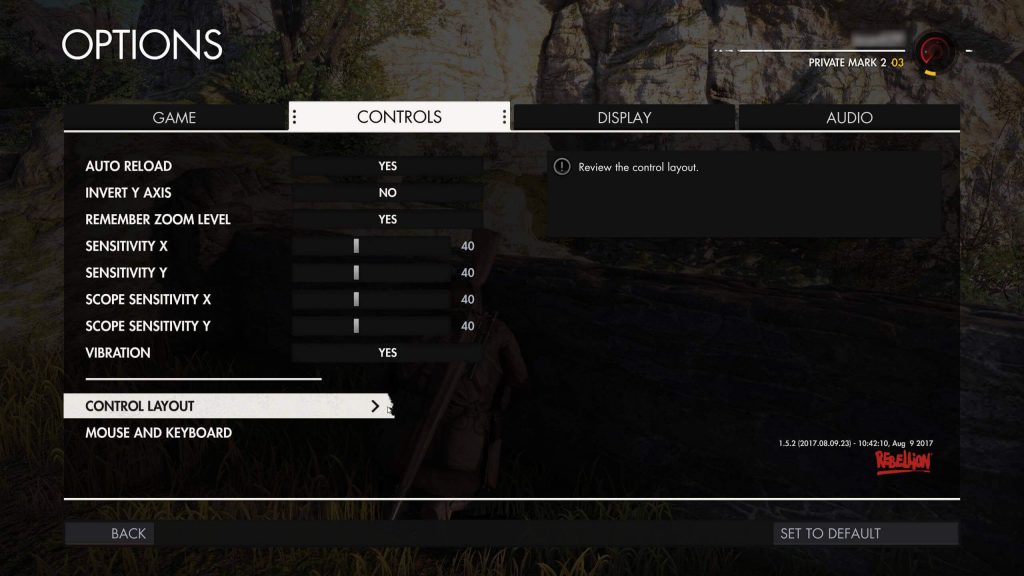Enable Players to Customize Control Configurations
On this page
When players launch your game, they should ideally be able to start playing immediately without the need to configure input controls.
Allow for Customization of Input Controls
Enabling configurable controls is highly beneficial, particularly for individuals who need to adapt the input layout due to motor impairments, non-standard keyboard layouts, or personal preferences.
Assist Modes
Refer to the Assist Modes section for further information.
Control Schemes
It is recommended to provide one or more fully remappable presets—also referred to as schemes or profiles—of your control layout. If multiple profiles are available, it is advisable to offer players the option to modify a selected profile and save it as a custom profile.
Since it is common for multiple players to use the same device, it is a good practice to allow each player to save and load their own custom control layout.
Invert
Inverting control inputs can be useful for players who prefer movement that is opposite to the default setting. To support this preference, offer separate options for inverting vertical and horizontal movements.
For example, inverting vertical movement means that sliding the mouse upward or pushing upward on a stick results in downward movement.
In Sniper Elite 4, players can invert the Y-axis (vertical) camera controls.
Credit: Rebellion Developments. Screenshot captured by the author.
Sensitivity
Players often have varying needs for input sensitivity, depending on factors such as motor impairment or personal preference. As such, your game should offer sensitivity adjustment options to support desirable levels of precision.
For instance, players may wish to modify stick or mouse sensitivity to control:
Camera movement speed.
Cursor movement speed.
Swap
Swapping control sticks can be useful for players who prefer using opposite hands or layouts. This option should be disabled by default but available for customization.
Toggles
For certain actions, players should be able to choose between toggling the function on/off with a single press or requiring the button to be held. Applicable actions may include:
Crouching.
Sprinting.
Steadying scope.
Zooming.
Solve Conflicts When Remapping Controls
When remapping controls, players may inadvertently assign a key that is already in use. Clearly communicate that a conflict exists and, ideally, indicate which action is currently assigned to the conflicting key.
In Strange Brigade, the game not only notifies players that a key is already bound to an action but also specifies the action in question.
Credit: Rebellion Developments. Screenshot captured by the author.
It may also occur—often following conflict resolution—that some actions remain unassigned. Provide a clear indication of which actions are unassigned. You may choose whether to require all actions to be assigned before gameplay or allow some to remain unassigned.
In Battlezone, players can play even if some actions are unassigned, provided they are not essential.
Credit: Rebellion Developments. Screenshot captured by the author.
When critical actions remain unassigned in Battlezone, the game prevents players from continuing until those bindings are set.
Credit: Rebellion Developments. Screenshot captured by the author.
Preserve and Restore Control Configurations
When reconfiguring controls, players should have the option to discard changes and revert to the previously saved setup.
Additionally, if players wish to return to the default configuration designed by the game developer, provide a simple mechanism to restore defaults.
In Supraland, players can restore individual key bindings by selecting an arrow located next to each action.
Credit: Supra Games. Screenshot captured by the author.
In Frostpunk, all key bindings can be restored at once using a dedicated button.
Credit: 11 bit studios S.A.. Screenshot captured by the author.
Any changes made by players when remapping controls should be automatically reflected in visual control schemes, on-screen prompts, gameplay hints, and tutorials.
Allow Players to Create Custom Hotkeys
Your game should provide players with options to tailor their experience, as individual preferences vary widely regarding which features or items they wish to access quickly. These preferences may relate to the following:
When players need to switch between different options during gameplay, the most efficient method is to map these options directly to hardware controls. Ensure that the process for creating and adjusting these mappings is straightforward, and that players are able to reconfigure their preferences at any time.
Below are some examples of options for which players may wish to set custom hotkeys, as these elements are often used during gameplay:
Med-kits, bandages, and drugs in role-playing games.
Example:
In S.T.A.L.K.E.R. Anomaly, players are provided with four quick-access slots to which items can be assigned. These slots have default keybindings set to F1, F2, F3, and F4, but players are also able to rebind them as needed.
Abilities and powers in platformers or strategy games.
Example:
In World in Conflict, players may assign custom hotkeys for both offensive and defensive special abilities associated with their units.
Structures and units in strategy games.
Weapons and tools in action and role-playing games.
Allow for Multiple Ways of Navigation in Menus
Players should always have at least two different input methods available for navigating menus. This flexibility is particularly important for players with certain impairments, who may rely solely on specific input devices such as buttons, sticks, a mouse, or a keyboard.
To accommodate various needs, players should be able to use the following combinations for menu navigation:
Mouse and keyboard, rather than requiring only one or the other.
Analog sticks and D-pad, rather than relying solely on one of them.
Support Multiple Input Devices
Allowing players to choose from a variety of supported input devices will help broaden the accessibility and appeal of your game. Players should not be limited to a single input method for several important reasons:
Some players may not own, cannot obtain, or prefer not to use the required input device.
Players may play in various locations—such as at home, a friend’s house, or in a dormitory—where they may not have access to all their external peripherals.
In situations where multiple players share a location, such as a household, each player may prefer or require a different input device. For instance, in a racing game, one player may use a racing wheel and pedals while another uses a keyboard. Though the player using the keyboard may be at a disadvantage, both players should be able to participate.
Players may wish to switch between input methods, such as from mouse and keyboard to a gamepad, in order to adopt a more comfortable playing posture—such as sitting in an armchair or lying in bed.
Certain players may be unable to use a specific input device, or perform certain actions with it, due to physical impairments.
In Sniper Elite 4, players are offered two configuration options: “Control layout” and “Mouse and keyboard,” allowing for flexible input preferences.
Credit: Rebellion Developments. Screenshot captured by the author.

